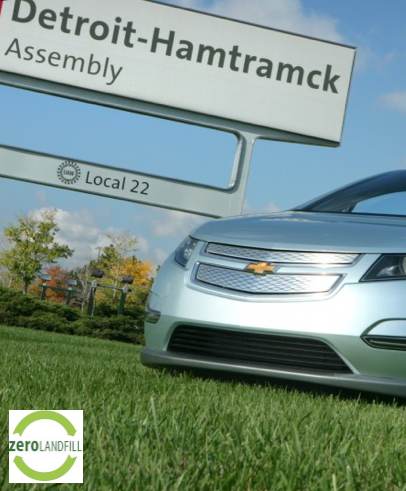 It took four years of perseverance for the giant automaker but, now a 75-year old General Motors manufacturing plant has announced it is now a zero-waste-to-landfill operation.
It took four years of perseverance for the giant automaker but, now a 75-year old General Motors manufacturing plant has announced it is now a zero-waste-to-landfill operation.
The Rochester, NY site and its 1,000 employees now reuse, recycle or convert to energy all waste from daily operations. Even attempts to recycle a challenging oily filter sludge generated from a machining operation was no match for the creativity of the team. With their achievement, the number of GM landfill-free facilities has hit 109, more than any other automaker.
“A plant pursuing landfill-free will review data, do dumpster dives to find the most landfilled items, and then tackle each waste stream to find better alternatives,” said John Bradburn, GM manager of waste reduction efforts. “It gets harder as you go and takes an entire plant’s commitment and sometimes outside partners to get the job done.”
The machine uses oil for lubrication from a central pit. Once complete, oil flows back to a section of the pit, carrying with it small pieces of metal shavings. Filters clean out the residue and metal chips, while clean oil flows back to the main pit to start the process again.
The solution was to centrifuge the remaining material – spinning it like a high-speed industrial washing machine. The velocity makes excess oil pass through a filter into a hose. The oil is filtered further to remove air and water, tested, and dumped back into the pit for reuse. The remaining dried filter paper and fine metal particles are converted into energy.
 Employee participation and enthusiasm were instrumental in recycling other waste streams such as paper, plastic and cardboard.
Employee participation and enthusiasm were instrumental in recycling other waste streams such as paper, plastic and cardboard.
“The key to lasting behavioral change is putting employees at the center of the challenge,” said Gail Finkelstein, environmental engineer at GM’s Rochester Operations plant. “We communicated regularly on our progress; reaching landfill-free wouldn’t be possible without them.”
To increase cardboard recycling, signage communicated the fact that GM receives 2 cents per pound if recycled versus paying 3 cents per pound to send it to a landfill. Employees read which local recycling center receives the material and what its next life becomes – more cardboard and liners – after processing. In just a year, the plant recycled 115 tons of cardboard, more than twice as much collected the prior year, avoiding use of 950 cubic yards of landfill space. The plant executed similar communications for scrap paper and electronics.
RELATED: Subaru Factory Sends Nothing to the Dump for 3 Years
RELATED: GE Is Going Green



















